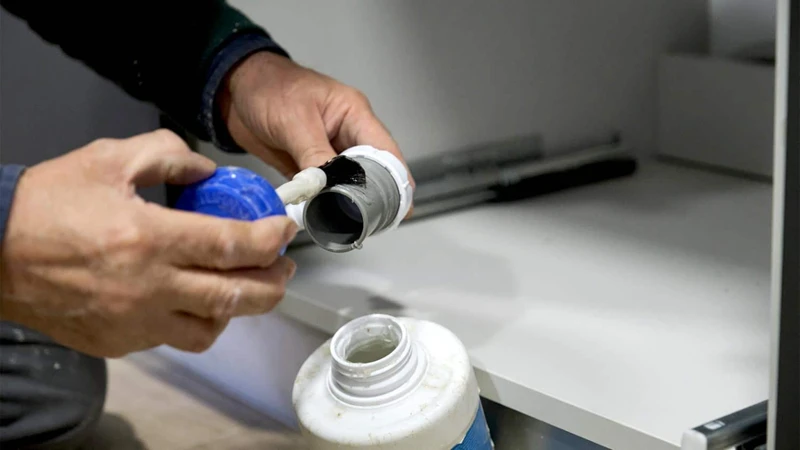When it comes to securing PVC piping in any plumbing project, understanding the appropriate pipe glue usage is critical. This not only ensures a watertight seal but also maintains the integrity of the entire plumbing system. Given the variety of pipes and glue types, it’s crucial to know how much adhesive to apply for an effective bond without causing waste or insufficient adhesion.
Understanding Pipe Adhesive Amount
To start off, assessing the pipe adhesive amount is vital. The quantity depends on the pipe’s diameter and the job’s specific requirements. A general rule of thumb is that larger pipes will need more glue to cover the surface area sufficiently, but there’s more to consider for an optimal bond.
Basics of PVC Glue Application
Delving into PVC glue application, it’s important to ensure that you have a clean and dry surface before you start. The process involves applying a primer first, followed by the glue itself. Both substances need to be used in correct proportions to create a strong, long-lasting bond.
Plumbing Glue Guide: Types and Techniques
With multiple options available on the market, selecting the right plumbing glue guide can simplify the decision-making process. Each type of solvent cement has its specific use case, and knowing which one aligns with your plumbing needs is essential. Moreover, the technique with which you apply the cement can significantly affect the outcome.
Choosing the Right Solvent Cement Quantity
Choosing the right solvent cement quantity involves understanding the project’s requirements and the pipe’s specifications. Over-application can be just as detrimental as applying too little. It’s a delicate balance that, when struck, can result in a perfect seal.
Essential Pipe Joint Sealant Tips
For a successful application, there are essential pipe joint sealant tips to follow. These include ensuring both pipe ends are clean and dry, applying the sealant evenly, and twisting the pipes slightly upon joining them. This helps distribute the sealant and eliminate air pockets.
How to Use Pipe Glue: A Step-by-Step Process
For those new to plumbing, understanding how to use pipe glue can seem daunting. However, with a step-by-step process in place, you can ensure a secure fit every time. The key is preparation, precise application, and patience during the curing process.
Determining the Correct Glue for Pipes
Firstly, determining glue for pipes is essential. Different materials may require different types of adhesives. PVC, CPVC, and ABS pipes each have their own specific glue that is formulated to bond effectively with the material’s surface.
Applying Pipe Bonding Adhesive
When it comes to applying pipe bonding adhesive, a systematic approach is best. Begin by applying a primer, then the glue, and finally, join the pipes. It’s important to work quickly as the solvent cement sets fast, and once the pipes are joined, they should not be moved.
Finalizing the Connection
After the pipes are connected, the job isn’t quite done. Finalizing the connection properly is imperative to ensure that the seal will hold under pressure and not succumb to leaks or bursts over time.
Checking Pipe Glue Drying Time
One of the final steps is checking pipe glue drying time. Different adhesives have varying curing times, which can be affected by the ambient temperature and humidity. This step is crucial to prevent premature use that could compromise the piping system.
When embarking on DIY projects or home repairs, it’s essential to understand the nuances of different adhesives. For instance, if you’re interested in learning about the creation process of various glues, our article on how hot glue is made can provide you with that information. Meanwhile, if you’re working with wood, knowing how much wood glue to use is crucial for the integrity of your project. For textiles, the strength of the bond is key, so you might want to check out our insights on how strong fabric glue is. And for those dealing with plumbing, we’ll help you understand just how much pipe glue you’ll need to ensure a secure and leak-free connection.
Ensuring a Secure and Leak-free Bond
To ensure a secure and leak-free bond, it’s important to test the connection once the recommended drying time has elapsed. This can be done by running water through the system and inspecting for leaks. A successful application means no water escapes and the system holds under operational pressures.
By following this comprehensive guide, you’ll be well-equipped to tackle your next plumbing project with confidence. Remember, precision in pipe glue usage will result in a durable and reliable plumbing system that stands the test of time.


